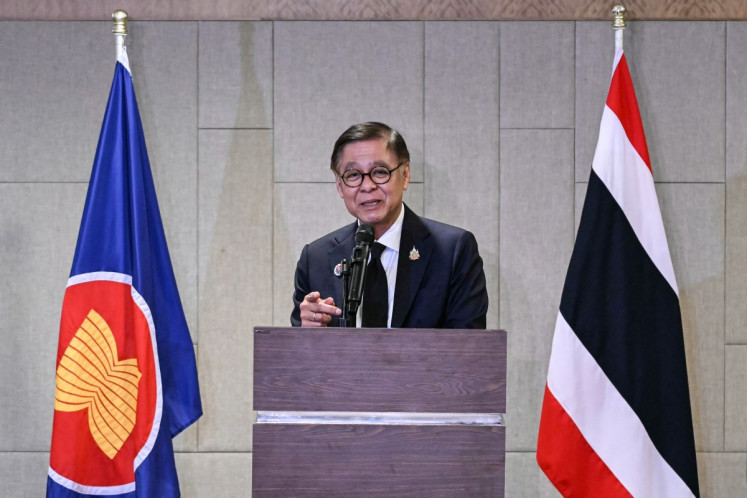Popular Reads
Top Results
Can't find what you're looking for?
View all search resultsPopular Reads
Top Results
Can't find what you're looking for?
View all search resultsGovt may cut reference price of CPO
As palm oil prices continue their downward trend in the global market, the government is considering lowering the price reference of crude palm oil (CPO) used as the basis in calculating export tax, the Trade Ministryâs head of trade policy research and development, Tjahya Widayanti, has said
Change text size
Gift Premium Articles
to Anyone
A
s palm oil prices continue their downward trend in the global market, the government is considering lowering the price reference of crude palm oil (CPO) used as the basis in calculating export tax, the Trade Ministry's head of trade policy research and development, Tjahya Widayanti, has said.
Tjahya said the measure would be necessary as the volume of CPO had doubled recently and growth needed to be spurred in the downstream industry.
'To fulfill domestic needs we need to charge export taxes and this is under discussion. We will lower the threshold,' she explained.
At present, the government charges taxes on CPO shipments above US$750 a ton. However, in October last year, duties were cut to zero as CPO prices dipped below the reference price.
In recent years, the progressive export tax regime has helped the domestic refining industry to grow, as it help keeps supply at home.
The Trade Ministry's director general for foreign trade Partogi Pangaribuan said that the threshold might be cut to between $500 and $600 per ton.
Meanwhile, Derom Bangun, the chairman of the Indonesian Palm Oil Board (DMSI), predicted CPO prices would rise by between 6 and 8 percent next month as a result of a natural lull in output in the last few months.
Derom estimated the CPO price would increase to between $710 and $720 per ton in April from $665 per ton at present.
'Because of low supply and an annual trough in production in February, prices are expected to rise to $710 per ton in April,' he told reporters on Thursday.
CPO output usually hits its peak in September, when total production usually accounts for between 11 and 12 percent of the total national production for the year. With this in mind, Derom estimates that the full-year output in 2015 will reach 31 million tons, 5 percent higher than CPO supplies last year.
Even so, Derom predicted diminished exports to India this year if the price difference between soybean oil and palm oil continued to dwindle. Since 2008, there has been a $150 gap between palm oil and the more expensive soybean oil, prompting buyers to favor the former for use in everything from noodles to cosmetics.
'Now the deficit has narrowed to just $50, because of India's rising demand for vegetable oil,' he said.
According to Derom, India's need for oilseed has increased from 12.3 million tons to 12.6 million tons this year, buoyed by consumer demand.
As a result, India's CPO imports from Indonesia and Malaysia this year will decrease by around 700,000 tons to 8.25 million tons, while soybean oil and sunflower oil demand is expected to rise to 2.5 million tons and 1.3 million tons,
respectively.










